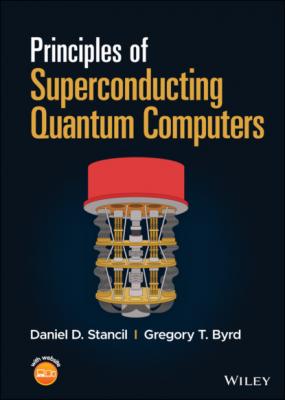Principles of Superconducting Quantum Computers. Daniel D. Stancil
Чтение книги онлайн.
Читать онлайн книгу Principles of Superconducting Quantum Computers - Daniel D. Stancil страница 11
 a different set of basis states. (We will discuss measurement in more detail in later chapters.)
a different set of basis states. (We will discuss measurement in more detail in later chapters.)
When a qubit is measured: (a) the state is changed to one of the basis states associated with the measurement, and (b) the measurement apparatus tells us the resulting state. In general, the probability that a state |ψ⟩ will be found in the basis state |a⟩ when measured is given by
This is called the Born Rule. For example, the probability that the outcome of measuring the state |ψ⟩ above is |0⟩,|1⟩ is given by
as we found before.
1.4 Unitary Operations and Single-Qubit Gates
We refer to a transformation from one quantum state to another as a gate. The effect of a single qubit gate is to change α and β into a new mixture α′ and β′:
This can be written as a matrix equation
Since the length of the state vector must always be unity, we are only allowed to use matrices U that conserve the length of the vector. In other words, ⟨ψ′|ψ′⟩ = ⟨ψ|ψ⟩ = 1. This puts a very important constraint on the matrix U:
using the following observation:
Since ⟨ψ|ψ⟩ = 1, we conclude that
where I is the identity matrix
Matrices that satisfy this requirement are called unitary matrices. We can view these matrices as performing an operation on a qubit by changing the mixture of basis states. Consequently, the matrices U are also referred to as unitary operators.
The identity matrix I can be considered to be the simplest “gate” and leaves the state vector unchanged. Classically, the NOT gate is the only non-trivial single-bit gate. In contrast, there are many non-trivial single qubit quantum gates (technically, the number of 2×2 unitary matrices is unlimited). The most common non-trivial single qubit gates are the Pauli-X (X), Pauli-Y (Y), Pauli-Z (Z), and Hadamard (H) gates defined as follows:
To get an understanding of what these gates do, consider applying an X gate to the “ground” state |0⟩:
Similarly,